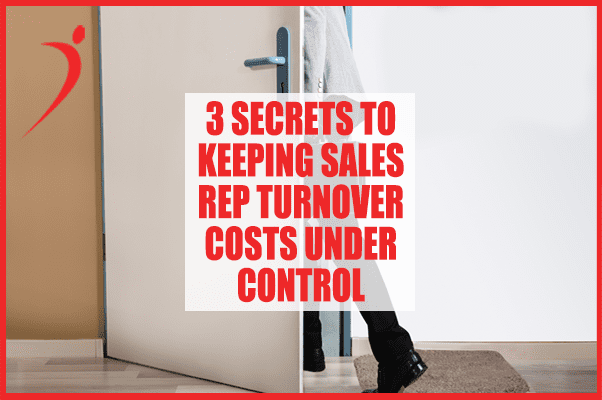
It’s not realistic to think that every great salesperson on your team will stick around until they retire. Turnover happens. People jump ship for all kinds of reasons and unfortunately, the demand for top performers far outpaces supply.
The bad news for your hiring department is two-fold. First, turnover rates for sales positions are much higher than they are for other roles (20% on average). And second, every salesperson who leaves your company impacts both your top and bottom line.
But the good news is that you can do something about it with a strong sales recruiting strategy. By developing a three-pronged strategy that encompasses recruiting, engagement, and customer loyalty, you can keep a lid on the skyrocketing costs of sales rep turnover.
Sales Recruiting and Hiring
Hiring for the right fit should be high on your list of recruiting goals. We all know someone who looked brilliant on paper, but never quite meshed with the team. Those people will be out the door as soon as a better offer comes along. That’s why your recruiting process should search out not only the right competencies but also the right cultural fit. Here’s how to do it:
- Analyze Top Performers—Take a look at the data on what your top performers had in common during the recruiting and hiring process. Did they have a certain type of experience? Did they come from a particular background or source? How did they perform in the interview process?
- Consider Cultural Fit—Communicate your company culture during the recruiting process. The goal here is to proactively identify people who will perform well in your unique sales environment rather than discovering a poor fit after the hire.
- Involve Stakeholders—Involve several key stakeholders in the interview process so you can hear a variety of takeaways on the candidate. Peer interviews are also a great way to get different impressions and pinpoint potential red flags.
- Build a Strong Talent Bench—Expand your pool of promising candidates by continually recruiting qualified salespeople who can step into vacated sales roles quickly. This list might include employee referrals, previous candidates, and internal employees.
- Emphasize Candidate Experience—Candidate experience plays a significant role in employee engagement. In fact, up to 20% of turnover happens within the first two months. By treating candidates respectfully, communicating promptly, and keeping them informed about their status, you can start your relationship off on the right foot.
Effective recruiting will reduce both the number and length of job vacancies, and will support strategic hiring programs that emphasize candidate fit rather than just filling seats.
Onboarding and Training for Engagement
High engagement rates typically correlate with lower turnover rates, and that starts before Day One. During the onboarding phase, your goal is to get the candidate up to speed as quickly as possible. In addition to the specifics of job training, strong onboarding programs emphasize:
- Engagement
- Culture
- Connection
Human interaction via a training buddy or mentor helps employees feel connected to the team. Cultural engagement can be as simple as having new employees shadow an experienced employee, demonstrating key sales strategies, and bringing them up to speed on current clients and resources. Human connection is also the best way to identify flight risks early and re-engage those employees before they leave.
But don’t stop with onboarding. Candidates are also looking for employers who invest in their professional development. Today’s employees want more than a job. They want a calling. And that means they’re looking for an employer who will contribute to their professional growth. That may include receiving coaching from a manager, attending a conference, participating in long-term training opportunities, and establishing a clear path to advancement.
Customer Retention and Loyalty
The final piece of the puzzle is to minimize lost opportunities when you do experience salesperson turnover. Make sure customers don’t feel neglected when their key point of contact leaves by building customer loyalty into your process long before that’s even a consideration. Here are a few tips:
- Build multiple connections with every client.
- Ask sales managers or another key salesperson to step in and handle accounts when a salesperson leaves. This lets the customer know they still matter to you.
- Use your CRM strategically. Document customer data and needs so you don’t lose that knowledge along with the salesperson.
While it’s true that turnover is a fact of life, it doesn’t follow that you should be resigned to it. Implementing these strategies to reduce the cost of sales rep turnover can boost both revenue and profit over time as you recoup missed opportunities and keep a strong bench of top talent for your key sales positions.

